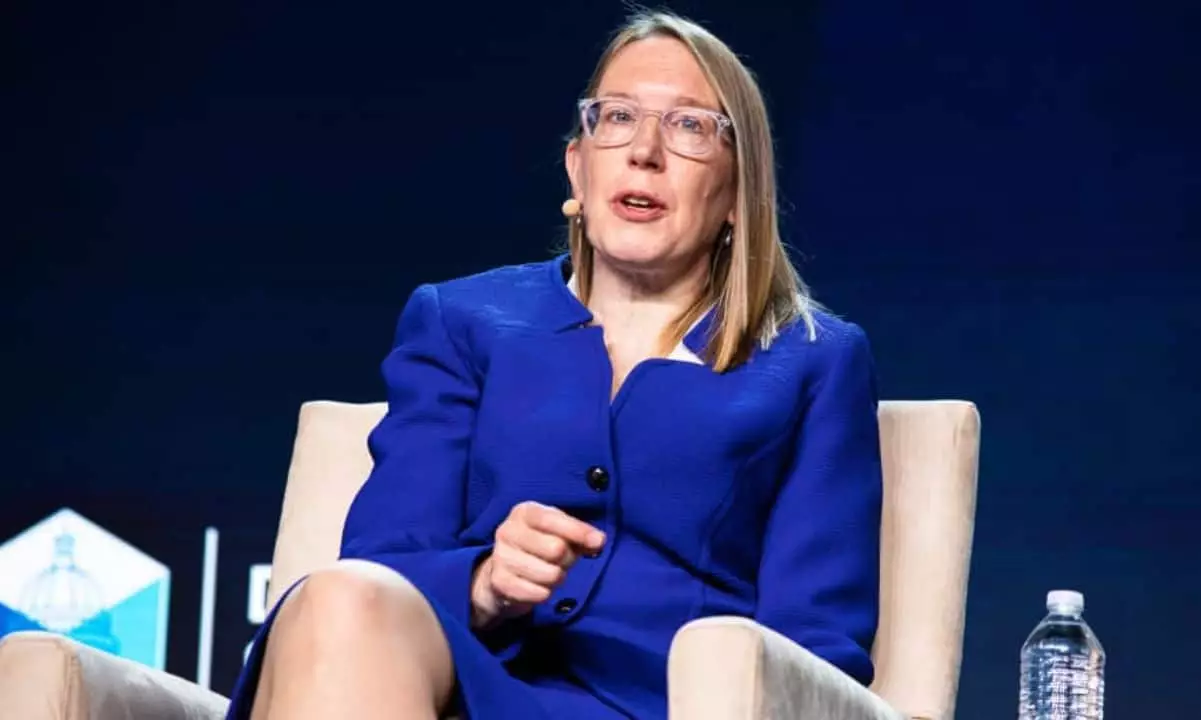The landscape of cryptocurrency regulation has often been characterized by uncertainty and controversy. Recently, Hester Peirce, a Commissioner at the U.S. Securities and Exchange Commission (SEC), offered insights into the regulatory framework she envisions under the incoming administration of President-elect Donald Trump. In a detailed interview on Fox Business, Peirce articulated her strategy for addressing critical issues that she believes are obstructing the growth of the cryptocurrency sector.
Addressing Operational Barriers
Peirce’s first priority focuses on dispelling the restrictive environment surrounding the cryptocurrency industry, particularly referencing the contentious “Operation Chokepoint 2.0.” This initiative has garnered criticism as it supposedly aims to impede cryptocurrencies’ access to essential banking and financial services. Peirce’s assertion that the SEC must take action against these inhibitive practices reflects a fundamental belief in maintaining an equitable environment for digital innovation. Her straightforward motto—”Step one is to stop this approach”—serves as a clarion call for regulators to reconsider policies that limit financial access for crypto firms.
The implications of this stance cannot be understated. A conducive regulatory framework will not only foster innovation but also instill confidence among investors and companies operating within the crypto space. If the barriers are dismantled, it is plausible to envision a robust ecosystem where cryptocurrencies can flourish without fear of arbitrary restrictions.
Peirce’s second significant proposal involves the crucial need for clarity regarding which digital assets fall under the SEC’s jurisdiction. Current confusion around this issue has often left companies and investors in a state of ambiguity, especially concerning which assets are classified as securities. By delineating the parameters of the SEC’s regulatory reach, Peirce seeks to alleviate uncertainties that have been stymying the industry’s growth.
Indeed, the definitions surrounding what constitutes a security are critical to fostering a transparent environment. The growing number of tokens and decentralized finance solutions has complicated this regulatory landscape, making it imperative for the SEC to engage proactively with stakeholders to foster mutual understanding. An open dialogue between regulators and crypto businesses can pave the way for collaborative efforts to adapt existing regulations, ultimately ensuring that they are relevant and effective in the context of modern innovations.
One of the more innovative aspects of Peirce’s vision is her emphasis on communal involvement in regulatory discussions. She argues that progress can be significantly expedited when regulators engage transparently with crypto firms. By inviting diverse perspectives and insights, the SEC stands to gain an invaluable understanding of the unique challenges faced by the industry.
Building a collaborative framework allows for more comprehensive solutions that directly address the concerns of crypto companies while aligning them with legal compliance. This approach is essential for creating regulations that are not only artificial barriers but, instead, foster an environment ripe for innovation and growth.
Recent disclosures, such as the documents released by Coinbase implicating federal agencies in suppressing crypto firms, underscore the urgency of these discussions. With increasing scrutiny over alleged government interference, representatives in Congress, like U.S. Representative French Hill, have called for probes into Operation Chokepoint 2.0, which he describes as a politically motivated debanking of the crypto sector. The sentiment shared by industry leaders, including Cardano founder Charles Hoskinson, adds another layer of global concern surrounding these restrictive efforts.
The future of cryptocurrency in the U.S. hinges upon how regulators, industry leaders, and lawmakers navigate these tumultuous waters. As Peirce lays the groundwork for a more balanced regulatory environment, her insights could potentially lead to a more successful, well-integrated crypto market. By prioritizing collaboration and transparency, regulators may not only safeguard investor interests but also reaffirm America’s position as a leader in the global technological and financial landscape.
Hester Peirce’s forward-thinking approach to cryptocurrency regulation emphasizes crucial changes to enhance access, clarity, and collaboration within the sector. With these initiatives, there is a palpable hope for a future where cryptocurrencies can evolve without the impediments of outdated regulation.

